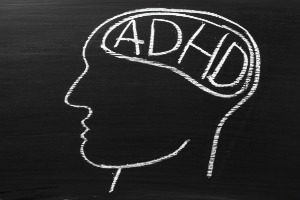What Does it Mean to “Treat” ADHD?

True to my DNA, while at a conference early in my career as a coach, I never stopped. I was in constant discussion, taking the time to delve into issues I don't often get to explore thoroughly. It was exhilarating. And it was all still percolating in my brain when it led me to the $20 million question:
What Am I Going to Do With This New Awareness?
It was an ADHD conference, and I was moved when Dr. Hallowell talked about the value of hope. He finds joy in acknowledging ADHD for patients, teaching them to accept it and helping them to understand that they can change things. He was impassioned about the importance of “yielding” to structure.
Those words struck deep. If I'd been managing my complex family for so long, with such awareness and acceptance, then why weren't we further along on the “you don't have to live like this” scale? Why were things still such a struggle?
One thing I did really well in managing my ADHD in the early years was to hold myself harmless –- I was not making myself wrong by asking probing questions. I had acknowledged and accepted the ADHD in my family and myself. We'd done a great job of laughing, finding humor and joy in each other and our nuttiness. We basked in the creative energy of our playful home, a space that was welcoming and energizing, encouraging people to be themselves and to find that expression in the world, whatever that meant.
But to be honest, I think I had gotten a little too comfortable with the “acknowledgement/ acceptance” stage. My conviction that it doesn't have to be this way had definitely taken a back seat to my desire to empower my children to accept and love themselves. I'm not sure I really embraced the next steps as firmly as might have been helpful.
Article continues below...
Minimize Meltdowns!
Download a free tipsheet "Top 10 Ways to Stop Meltdowns in Their Tracks" to stop yelling and tantrums from everyone!
I Started Looking at My Family Dynamics.
When things work, there is a structure supporting it. When they don't? No surprise, no structure.
On our “Conference Debrief" after that event, one mom talked about the dramatic improvement in her daughter's education after diagnosis. What worked? A resource center that met with her daily initially and worked with her to learn structures to support herself. One of my kids was doing great in school, despite both ADHD and Dyslexia. Why? She craves structure –drives the rest of us crazy sometimes, but it really works!
My “aha”? While we had been busy managing our ADHD, I'm not sure we had done as thorough a job as we could in “treating” it. More accurately, we had treated it sporadically, when what was really required was a direct, systematic approach – not easy for two ADHD parents.
So, what was I going to do about it?
What Does It Really Mean to “Treat” Our ADHD?
1. I had a conversation with each member of my family to introduce hope, teaching them that:
a. their brains work differently.
b. that doesn't mean they have to accept things as they are.
2. I got a support system in place for myself. For me, it was getting an ADHD coach, but other options include therapists, organizers, etc. Then I looked for what supports would work for each of them, if they were ready for support.
3. Looked for fun treatment options so that my family would buy in to the process of wanting to create change. I bought an inexpensive online “brain training” program as a start. They enjoyed it for a while – and so did I!
4. I focused on holding my family and me accountable to using structures, rather than to the outcomes themselves. I started emphasizing the value of structure, and explaining why it's important (see #1).
So What About You?
Where are you in your “treatment” of the ADHD in your family? I strongly recommend that you start with acceptance and acknowledgment – they are critical first steps. But trust me – don't stop there. What are you going to do about it? How can we help?

